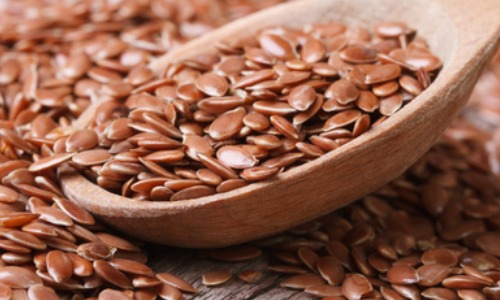

Flaxseeds are a powerhouse of alpha-linolenic acid, or ALA, the plant-based source of omega-3 fat.
Omega-3 fat is essential to a child’s diet—it not only acts as an antioxidant to prevent disease, but it is used by the body to promote healthy cell growth and brain function. Parents may want to use ground flaxseeds (the seeds can be purchased already ground up) since they are better absorbed in that form.
Of course, no child is likely to happily gobble up a spoonful of plain flaxseeds. Sneaking flaxseeds into meals provides a simple solution to getting children to eat them.
Sprinkle in Sandwiches
Sprinkling ground flaxseeds into sandwiches will surely disguise them, especially for visually picky eaters. Flaxseeds can be easily hidden below ketchup, mustard, mayonnaise, peanut butter or jelly. In terms of how much to use, ¼ of a teaspoon will add 400 mg of omega-3 fat to your child’s meal with a flavor that should be masked by condiments, jellies and butters.
Add to Pancakes and Cereal
A pinch of flaxseeds can easily be added to pancake batter, hot cereal such as oatmeal and even cold cereal like corn flakes served with milk. The flaxseeds may be visible and do float in milk. They may also add a slightly nutty flavor—you can experiment with different quantities, such as 1/8 of a teaspoon to see how much added taste from the flaxseeds your child will tolerate.
Include in Baking
Including flaxseeds in muffins and cookies add nutritional value to any baked treat. Ground flaxseeds, which have a brown powder-like consistency, may be noticeable once the goodies are baked. Make the experience of adding the seeds fun—let you child sprinkle the seeds into the batter with his or her fingers or with a measuring spoon.
How Much To Give Children Daily
One tablespoon of ground flaxseeds contains about 1.6 grams of plant omega-3 fat, according to the nutritional value database Nutrition Data.com. According to the U.S. Department of Agriculture, the amount of omega-3 your child should be getting daily depends on his or her age. Babies 0-12 months should receive 500 mg per day, children 1-3 years old should get 700 mg a day, while kids 4-8 should consume 700 mg a day. After the age of 8, the daily recommended amount is different for boys and girls, but ranges between 1 gram and 1.6 grams a day. Keep in mind that most plant foods like grains, nuts and fruit contain some, albiet smaller amounts, of omega 3 fat.
YOU MAY ALSO LIKE
3 Alternatives To Cow’s Milk for Kids
Striking Photos Show What Kids Around the World Eat for Lunch
5 Alternatives to Sugar Your Kids Will Love

 233k
233k  41k
41k  Subscribe
Subscribe 
